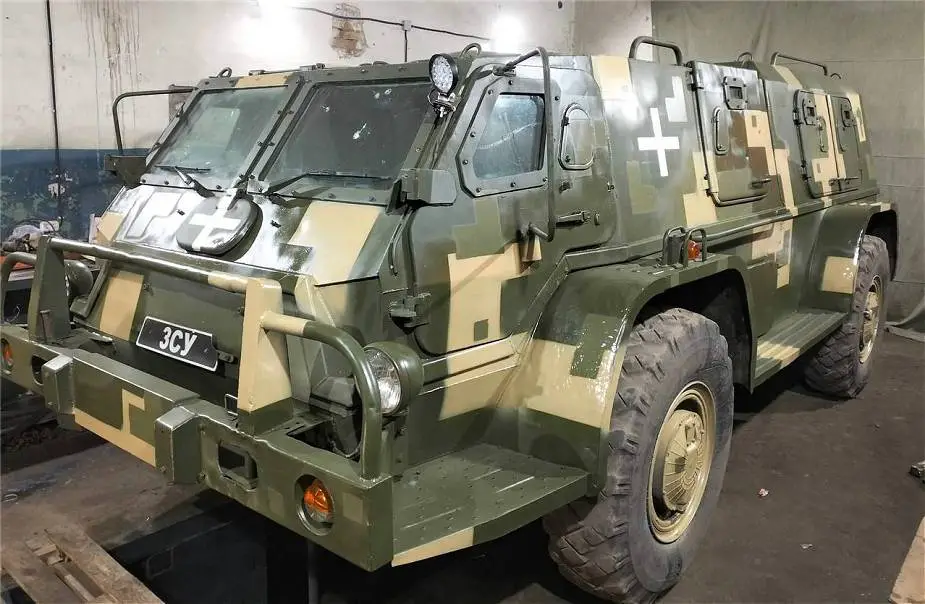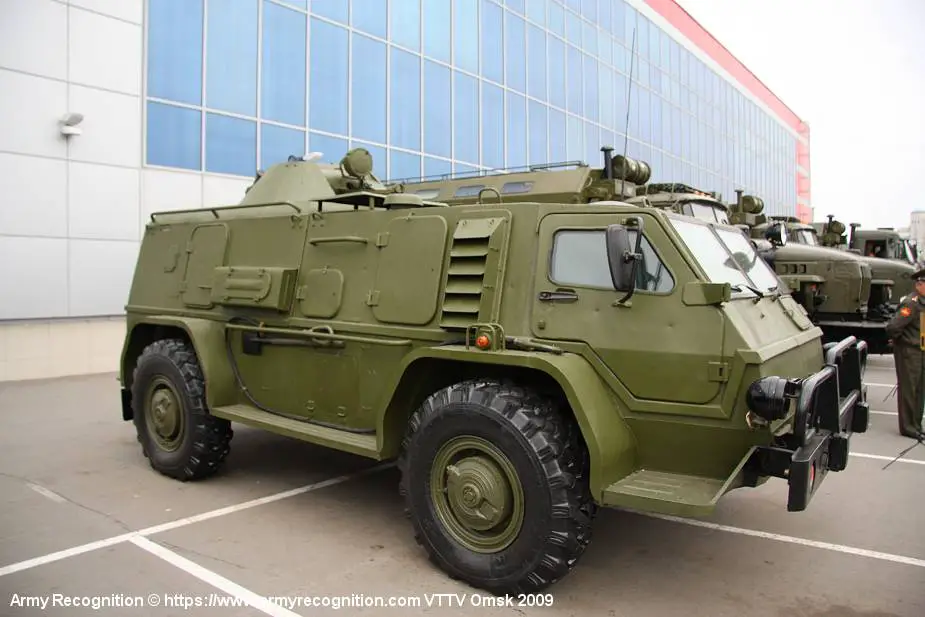- Army
- Conflicts in the world
- Israel - Iran conflict 2025
- Pakistan - India Conflict 2025
- Russia Ukraine War 2022
- Libya conflict day by day
- HAMAS - Israel War 2023
- Operation Serval in Mali French Army
- Sangaris operation Central African Republic
- Sangaris opération militaire République Centreafrique
- Ukraine - Russia conflict
- Syria conflict news
- Defence & Security Industry Technology
- Armies in the world
- Analysis Defense and Security Industry
- Conflicts in the world
- Navy
- Air
Ukrainian soldiers seize extremely rare Russian GAZ-3937 Vodnik armored vehicle
According to pictures released on the "The Dead District" Twitter account on March 29, 2023, Ukrainian soldiers have captured a very rare Russian 4x4 wheeled armored vehicle, the GAZ-3937 Vodnik. It has been repainted with pixel camouflage and is now being used by Ukrainian soldiers to fight Russian troops.
Follow Army Recognition on Google News at this link

Ukrainian soldiers have captured a Russian GAZ-3937 Vodnik which has been repainted with pixel camouflage and is now being used by Ukrainian soldiers. (Picture source The Dead District Twitter account)
Since the beginning of the war in Ukraine, Ukrainian soldiers have captured several dozen Russian military vehicles which have been repaired and put back into service within the Ukrainian army.
Throughout the conflict in Ukraine, the Ukrainian military has seized numerous Russian-made vehicles from separatist forces. The vehicles encompass T-64 and T-72 tanks, BMP-1 and BMP-2 infantry fighting vehicles, and BTR-80 and BTR-70 armored personnel carriers, among other combat vehicles. The Ukrainian military has integrated this captured equipment into its arsenal and deployed it in combat operations.
The GAZ-3937 Vodnik has not been produced in large numbers, partly due to financial constraints and the prioritization of other military projects by the Russian government. The Russian military has access to several other armored vehicles that serve similar roles, such as the Tigr-M and the BTR-80/82 series. These vehicles have been more widely adopted, reducing the demand for the Vodnik.
The GAZ-3937 Vodnik is a Russian 4x4 wheeled armored vehicle designed and manufactured by the Gorky Automobile Plant (GAZ). It is intended for various military and security applications, such as personnel transport, reconnaissance, and border patrol. The vehicle features a modular design, allowing for the installation of various types of equipment and weapons systems based on mission requirements. The Vodnik is known for its off-road capabilities, high mobility, and amphibious nature, making it a versatile and effective combat vehicle.
The GAZ-3937 Vodnik was produced in limited quantities, with only a small number delivered to the Russian military. It is reported that approximately 54 vehicles were supplied, primarily for use by special forces units. The Vodnik saw action during the 2008 Russo-Georgian War.
The GAZ-3937 Vodnik entered service with the Russian armed forces in the early 2000s. However, it has not been produced in large numbers and remains a relatively rare vehicle within the Russian military inventory. The modular design of the GAZ-3937 Vodnik allows for easy reconfiguration to suit various mission profiles and user needs. Its combination of mobility, adaptability, and crew protection makes it a valuable asset in a wide range of military and security applications.

Russian army GAZ-3937 Vodnik 4x4 APC Armored Personnel Carrier vehicle. (Picture source Army Recognition)
The GAZ-3937 Vodnik has a standard crew of two, consisting of the driver and commander which are seated at the front of the hull offering good visibility and access to vehicle controls. It can accommodate up to eight infantrymen in its rear compartment, depending on the configuration. The compartment is designed to provide a comfortable and protected environment for the troops during transport, with individual seating and adequate space for personal equipment.
The GAZ-3937 Vodnik can be equipped with a variety of turrets, depending on the specific mission requirements and user preferences. In the APC version is fitted with a one-man turret which is similar to the turret mounted on the BTR-80 8x8 APC. This turret is armed with one 14.5mm KPVT heavy machine gun, one 7.62mm PKT machine gun, and a bank of six 81mm smoke grenade launchers is mounted at the rear of the turret.
The GAZ Vodnik could be powered by the GAZ-562 (175 hp), YaMZ-460 (160 hp) or HINO JO7C (165 hp) diesel engines. The engine is typically located in the front part of the vehicle, with the driver and commander seats positioned behind it. It can reach a road speed of up to 110 km/h (68 mph) and a cruising range of approximately 1,000 km (620 miles). These capabilities are attributed to its powerful turbocharged diesel engine and efficient drivetrain, which allow the vehicle to maintain high mobility in various terrains and operational situations.


























